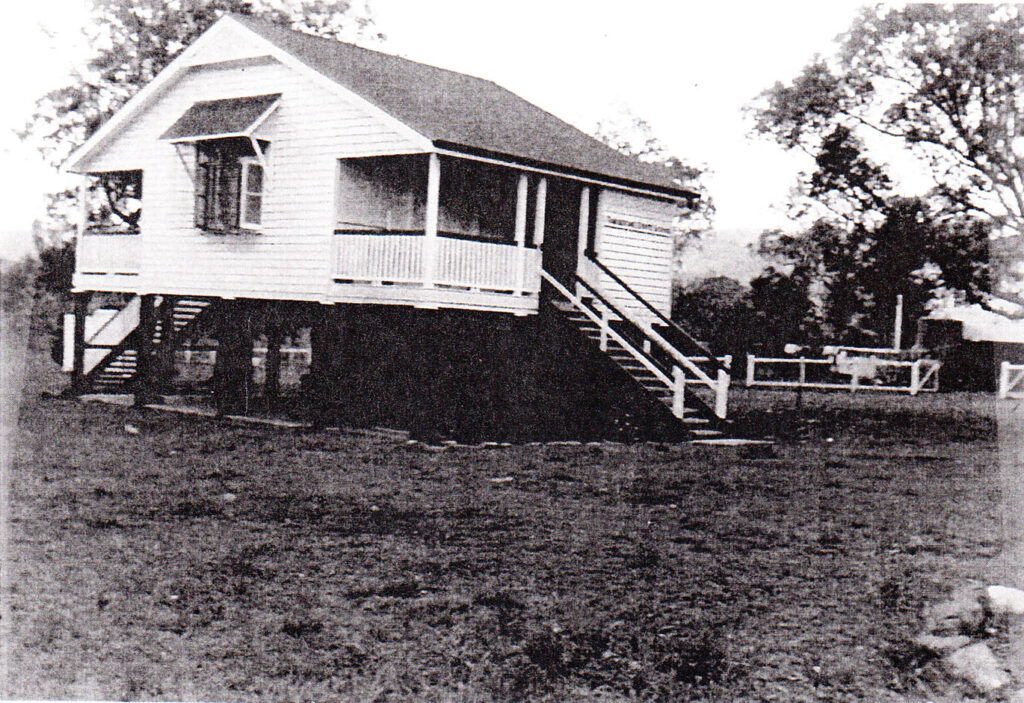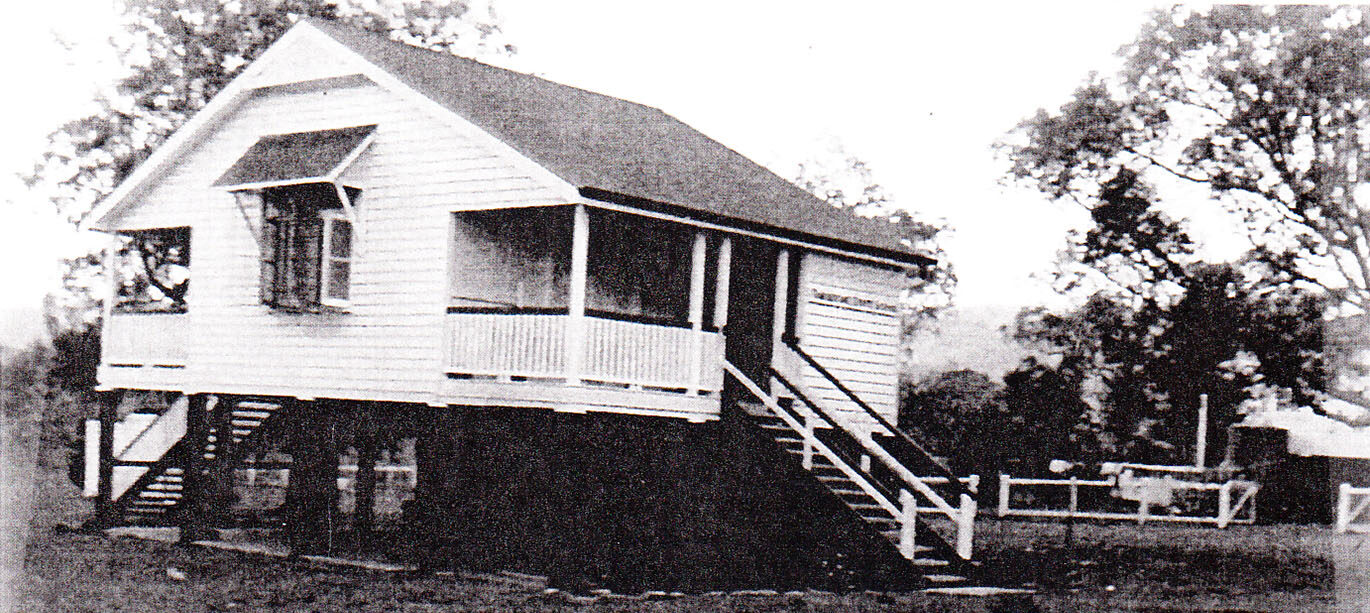1874
Committee Formed for Tambourine Provisional School
Church – School Building
1901
Land bought by Government
1904
Church pulled down
School temporarily in the Shire hall

1905
New school built
1909
Proclaimed a State School
1926
Name changed to Tamborine State School
1936
New buildings erected
1958
Uniform introduced
1959
400 trees were planted to celebrate the Centenary of State
1966
New School Constitution established
1967
The school had access to electricity for the first time
1969
Meeting held to save school due to falling numbers
1970
School closed, and the building shifted to Chambers Flat
1988
The school building moved back to near where it was first located
Tamborine Trailblazers (Original spelling ‘Tambourine’)
History of Tambourine & Surrounding Region – ‘Tamborine’s Buildings – The School’
In this edition, we are featuring an early structure of Tamborine – The Tambourine Provisional School:
In the early 1870s, with families very much part of the Tamborine community and around 20 children needing formal education, a school became part of the local agenda. Unfortunately, when Thomas Plunkett wrote to the Department of Public Instruction, he was told it would not be possible. At the time, a school needed an average attendance of 30 students and a school committee to pay for a third to one-half of the cost of school buildings and furniture. It was one of the ramifications of free settlers spreading across the countryside and needing to find ways to educate the children. Provisional schools were established for those who did not meet the criteria for setting up a school. However, this caused problems when the Provisional Schools outnumbered the number of State Schools, so they were gradually upgraded
Thomas Plunkett was told the premises for the Tambourine Provisional School would not be subsidised, so the first school was created in 1874 using the Church building, and another small cottage was quickly erected behind the church for a teacher. In those days, teachers did not have to be qualified. Miss Mary Kerr was employed as the first teacher. It is unknown how many students there were in the early days. While the Department would have conducted inspections of the premises, the school’s running was largely left up to a School Committee and the parents, who would have also had to pay for supplies and arrange activities for the children.
By the end of the century, the student numbers had increased, so plans were put in place to upgrade Tambourine Provisional School to a State School. The Government allocated 10 acres for the new school site in 1901. This was timely as the Church was being pulled down and was being shifted. The school was temporarily located at the Tamborine Shire Hall until the new buildings were erected at the new School Reserve in 1905.
The School Committee was very active in the early 19th century, as it looked at ways to improve the school and its facilities, the majority of which was paid for by the parents, while the Department covered the rest.
School attendance varied greatly but slowly increased until 1909, when it met the requirements to become a State School. After that, attendance was only impacted when the students were affected by serious illness, closing a couple of times when the teacher was in the hospital for 10 days, another time when there was an outbreak of the mumps and then on one very wet winter, there were days when none of the children would turn up!
A decision was made early on to remove the ‘u’ from Tambourine so it would become Tamborine State School, but it took several years to come into effect, only officially starting in 1926.
There were quite a few complaints in the 1920s/1930s about the state of the School building, including the space between the weatherboards and the room becoming very draughty, as well as its deteriorating nature. After initially being knocked back by the Department due to limited funds, it was decided that a new school would need to be built. Students were able to use the new building in 1937. The school reached a record 45.
